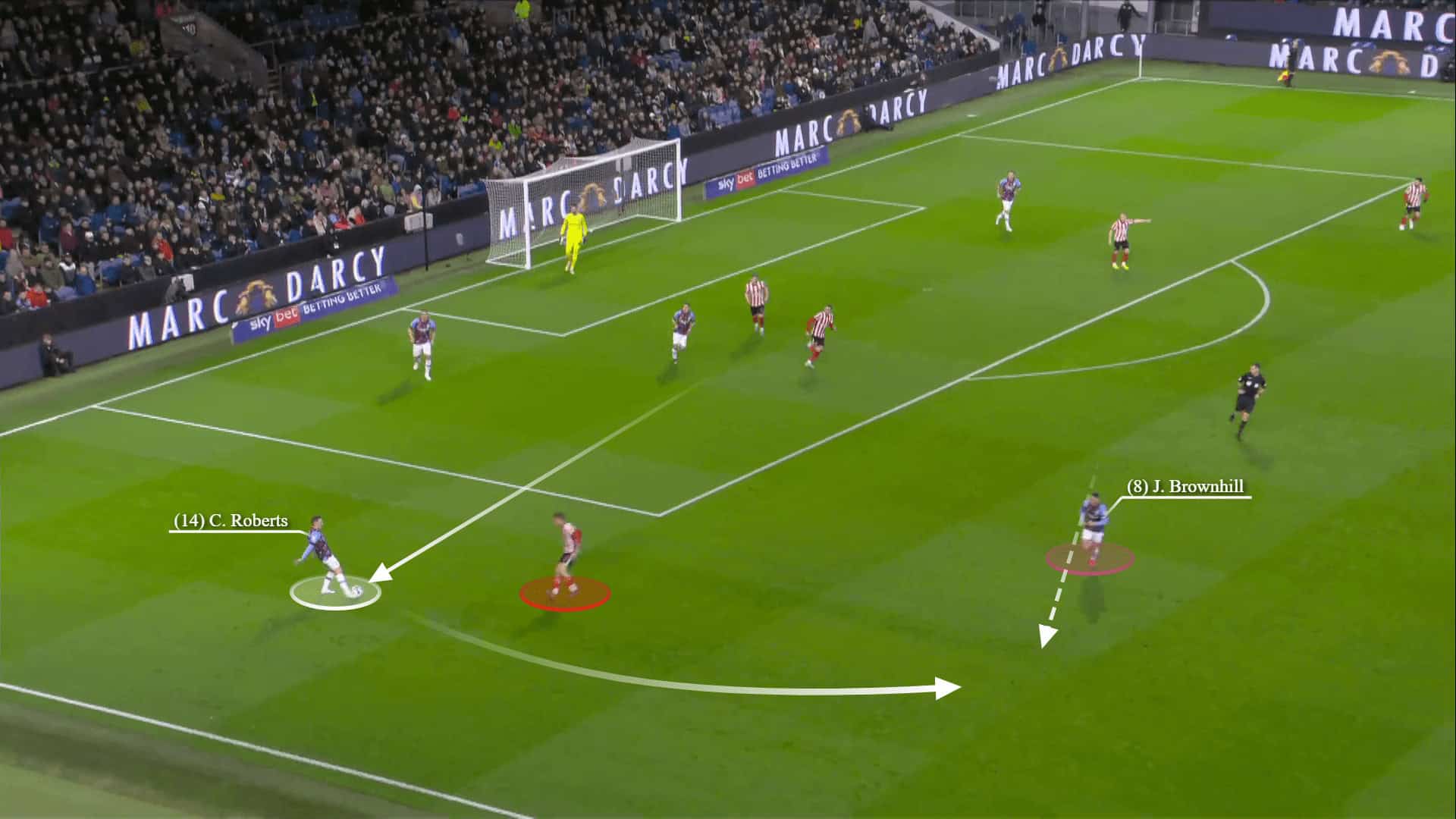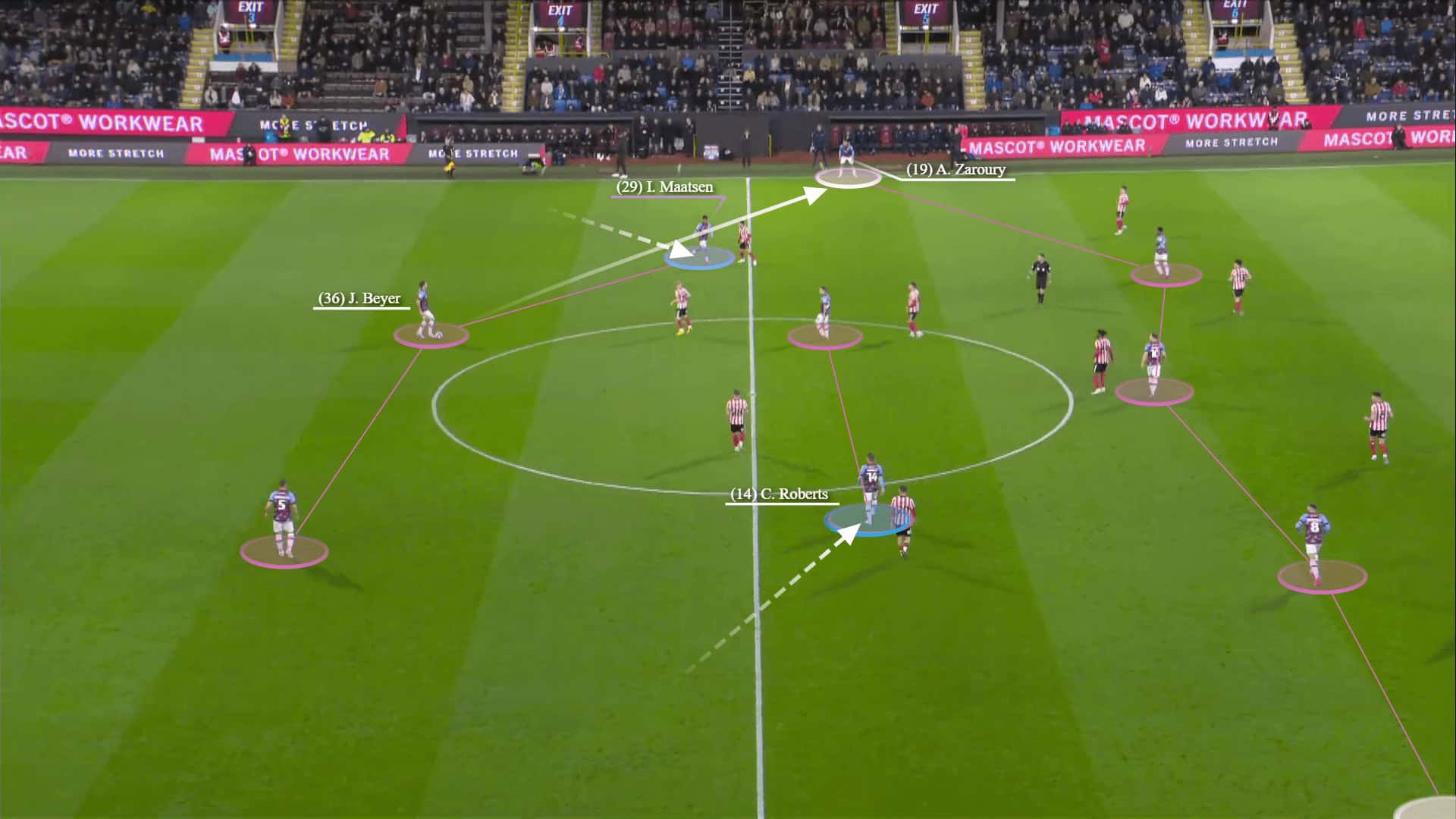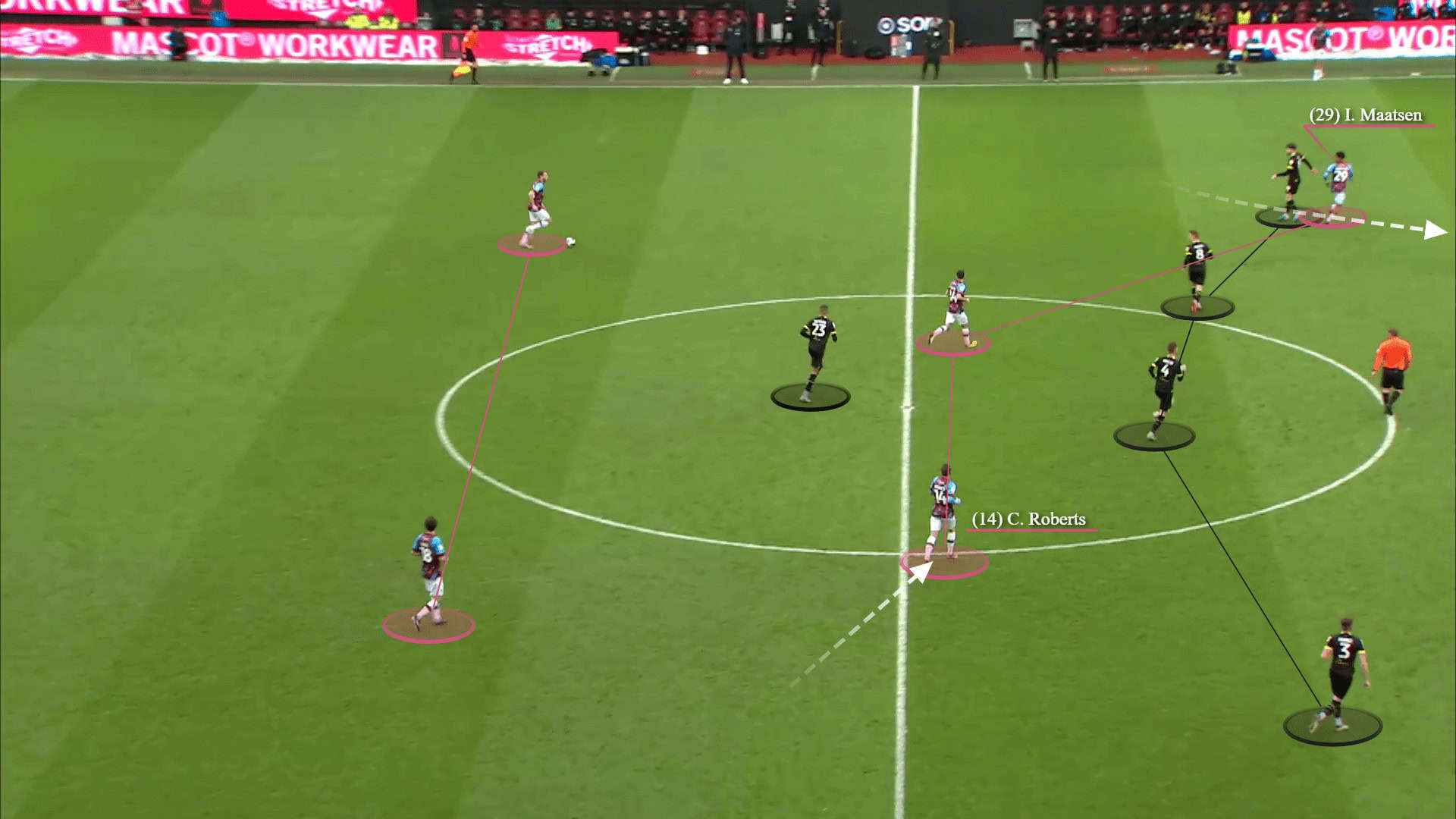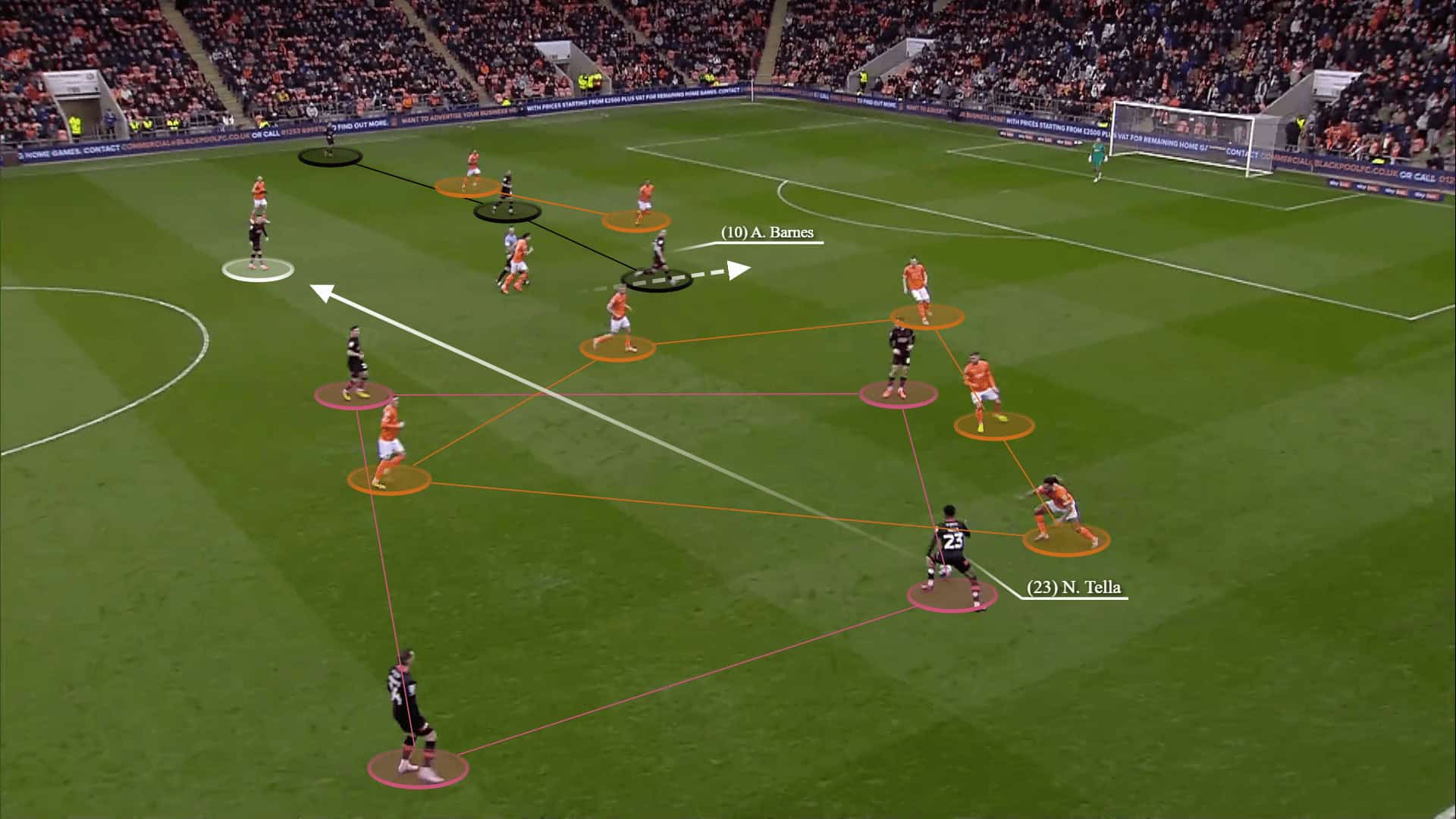While Arteta was listening to Pep Guardiola intently at Manchester City, another gentleman was watching.
This man was former Man City captain Vincent Kompany.
He explained before in the Sky Sports interview: “I learnt the most from Pep for sure”.
The 36-year-old, after his stint at Anderlecht, is now leading EFL Championship with Burnley and is on the brink of promotion to the Premier League, achieving the highest winning percentage in The Clarets’ history, with 64%.
Burnley have switched completely from the style of play of Sean Dyche to a totally different one with Kompany where they attempt to play a modern possession-based style of football.
This Vincent Kompany tactical analysis, in the form of a team scout report, dives into Kompany’s positional play fundamentals and tactics with Burnley, as the former Manchester City man moves on to lead Bayern Munich.
Vincent Kompany Positional Attack
In a new era at Burnley, Vincent Kompany style of play usually deviates between 4-2-3-1, 4-3-3 and 4-1-4-1 shapes but under the same positional principles.

The fundamental idea within his approach is to have players occupy offensive zones while they look to position themselves between the opponents in the defensive block in both horizontal and vertical lanes, as well as both inside and outside of the opponent’s block.
Burnley under the Belgian are more like Arsenal than Man City in the tempo aspect where the team wants to have a fluid system and search for speed in reaching the final third at a certain moment and operates the Y-axis more a little than the X-axis.
Build with the least amount of players as possible but as many as needed.
Another familiar idea is to have one extra player in the backline than the opponent’s strikers, creating a triangle with two centre-backs and a midfielder to outplay one striker or creating a numerical advantage to outplay two strikers. That secures clean ball progression.
The principal idea while building in an earlier zone on the pitch is to have numerical superiority.
Here in the below graphics, Burnley have seven players (goalkeeper, the back four and two defensive midfielders) against Sunderland’s five-man press.
Both midfielders are moving to create a triangle around the goalkeeper to find the spare man — the right-back Connor Roberts, who has the time and the space out wide.

Roberts, pressed by Sunderland’s player immediately, plays the pass into the space to the drifted Brownhill.

Under the same principles of having superiorities a little higher up the pitch, Kompany’s team varies between 3-2, 3-1, 2-1 and 4-1.
Meanwhile, the other players pin the opponent’s backline, operating mostly in a 3-2-5, 3-1-6 and 2-3-5 during the possession.
The system is consistent while having fluidity and players are smart to occupy various zones to keep the advantage.
In the same game against Sunderland’s 4-4-2 mid-block, Burnley operated a 3-2-5 in the progression phase. Both fullbacks are vital.
Right-back Roberts rolls inside to form a pair while left-back Ian Maatsen becomes part of a back three. Both wingers play high and wide to maintain the width while the No 10 and the other central midfielder operate the half-spaces.
Below, while they are in 3-2-5, Maatsen moves higher from the back three to create the passing angle from the centre-back Beyer to the left-winger Anass Zaroury.

In another building variation, while Burnley faces a 5-4-1 block, they use the minimum number in the first line. Both centre-backs are enough against a single striker which creates a dynamic 2-2-6 or 3-1-6.

Advancing on the pitch, Burnley attempt to possess the ball with a tendency towards the horizontal axis.
The Clarets average 63.7% possession in the Championship this season while Man City have a 64.4% possession average and Arsenal boast 60.3% in the Premier League. They rank top in this aspect.
In the opposition’s half, the team keep the same dynamicity and often attack with triangles and diamonds to lure the maximum number of opponents to penetrate vertically or re-circulate to the weak side.
Furthermore, the striker here is vital for Vincent Kompany’s tactics. He seems to be a false nine and mobile striker rather being a fixed nine to drop off to combine and involve in combinations.
Here below, against Blackpool, four players on the right-hand side operate a diamond, luring five opponents, including the right centre-back, which is creating space between the centre-backs for a possible vertical run from the veteran Barnes.
Tella decides here to re-circulate the ball to the relay player in the central zone to switch to the weak side.

Jóhann Berg Guðmundsson receives there and releases to the targeted side to isolate Zaroury with the fullback while Vitinho is moving in his blindside and the others started vertical runs to the box waiting for a cross.

In the final third, both fullbacks seem to invert inside in both half-spaces to isolate the wingers high and wide to gain the qualitative advantage and are ready to get involved in wide triangles and diamonds or become part of circulations, and can also make deep runs from a central area.
Furthermore, they are acting as a part of the rest defence to shield against any possible defensive transitions.

Here, in the below graphic from their game against Huddersfield Town, the left-back Maatsen was a part of the circulation from the right to the left side to isolate Zaroury there.

— and then after he received and Guðmundsson dragged the nearest centre-back away, Maatsen is starting his vertical run into the left half-space to the generated space.

It ends in the net from Barnes after a brilliant cross from Zaroury.

Also, we can see this in their first goal against Birmingham City.
After a rebound, the right-back Roberts started from a central zone to the winger Benson (in-to-out run).

— and then after Benson receives, the right-back overlaps to get the ball behind the fullback.
The dynamics of Roberts’ in-to-out run are vital here to gain superiority.

From this internal zone (golden zone for assists), the right-back cut the ball back to Zaroury who doubled his movement while Barnes dragged the defenders deeper.

Furthermore, Burnley have scored the most goals and have conceded the least goals in the Championship.

In the below graphic, Burnley’s pizza stats illustrate their brilliant attributes.

Vincent Kompany Modern Defending Approach
In defence, Kompany’s Burnley generally have a proactive mentality at any phase, where the players are active and try to retrieve the ball quickly in the quickest possible time to counterattack or retain possession.
Their system is like the elite teams today that tend to press from above and prevent opponents from owning the ball or controlling even them without the ball.
Usually, the high-pressing teams don’t risk pressing in a man-to-man shape so they are not vulnerable in the last line.
Thus, the builder generally has an extra player and goalkeeper as a numerical advantage there. The well-pressing teams attempt to direct the play into a specific zone or a particular player (pressing trap).
Here, in the below graphic, Burnley are pressing Hull City in a 4-2-3-1 scheme.
While Vitinho pushes to press the ball-carrying centre-back and cover the shadow of the left-back Elder, they are in an 8 vs 6 situation.
Logically, Hull City would access the spare player (the left-back) via a pass to the dropping midfielder and then pass to the free left-back.

The right-back Roberts was ready to press Elder there and it seems that it was a trap from Burnley where they had 4 vs 2 and succeeded to regain the ball in a higher area.

In the below graphic, Burnley registered 476 high regains this season while Man City have 373 high regains.
The Clarets also have 676 counter-pressing recoveries to Man City’s 463.
But it’s also important to consider the opposition’s strength and the different ways of playing between the Championship and the Premier League.

Furthermore, they seem to utilise a compact 4-4-2 mid-block structure, minimising gaps between the lines and waiting for any pressing triggers to move higher up the pitch to press.
Their coverage area is similar to Arsenal, as seen in the below graphic, despite Arsenal’s backline being a little higher compared to Burnley’s.
This may justify the tendency of most teams in the Championship to play long balls, so the backline lags a bit for the confrontation.

Conclusion
This has been a tactical analysis of Vincent Kompany’s positional play fundamentals and tactics with Burnley in their bid for promotion to the Premier League.
Burnley will need to invest and buy higher quality players to fit the Premier League after the possible promotion.
Pep Guardiola claims it is Vincent Kompany’s “destiny” to become Manchester City manager.
Only time will tell if he’s right.





Comments